Live Science
Articles written for the GLP list the source as Genes and Science. All other articles were written for the sources noted with excerpts provided by the GLP.

DNA shows Neanderthals mated with humans in two waves, not just once
[A]ncient humans mated with Neanderthals between 200,000 and 300,000 years ago, well before the more recent, and better-known mixing of the two ...

Discovery of fire lit up human evolution. When did it occur?
Scientists suspect that without a control over fire, humans probably would never have developed large brains and the benefits that ...

Are we any closer to understanding what consciousness is?
Thinkers have spent an immense amount of time and ink trying to unravel mysteries, such as how consciousness works and ...

How humans might play a role in our own extinction
[W]hat if human extinction was less a cinematic scenario, and instead, a looming reality? That might seem like a sensational ...

To this man, numbers look like scrambled “spaghetti” but his brain works fine. What’s going on?
RFS is the first patient with an inability to see numbers. "He sees something … a scramble of lines and ...

Zealandia revealed: Maps and interactive tools uncover backstory of Earth’s ‘lost’ eighth continent
Earth's eighth continent is 94% underwater.... ... Zealandia — or Te Riu-a-Māui, as it's referred to in the indigenous Māori ...

Century-old lung helps scientists trace measles back to now-eradicated cattle virus
For years, the lung sat in the basement of the Berlin Museum of Medical History along with hundreds of other ...
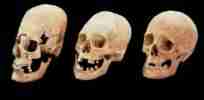
Why were these 1,000-year-old skulls shaped like ‘sci-fi aliens’?
Tight wrapping in childhood produced deliberately deformed skulls ...
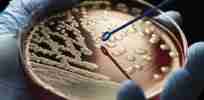
Battling antibiotic resistance by stopping evolution
One of the ways that bacteria evolve to become "antibiotic resistant" is by picking up free-floating genetic material from their environments. They ...

Zika virus could offer new way to attack deadly brain cancers
New research has revealed that the Zika virus breaks into brain cells by using a special molecular key, and scientists ...

Distinctive ‘Habsburg jaw’ of medieval kings and queens was created by centuries of inbreeding, study suggests
Many of the kings and queens of the Spanish Habsburg dynasty, which ruled across Europe from the 16th to the ...
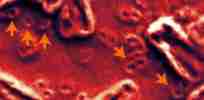
Aggressive cancer adapts quickly thanks to odd ‘doughnut-shaped’ DNA
Cancer cells may owe some of their destructive nature to unique, "doughnut-shaped" DNA, according to a new study. The study, published ...
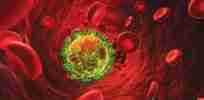
Gene editing used in China in a failed but promising attempt to cure HIV
Scientists in China have used CRISPR gene-editing technology to treat a patient with HIV, but it didn't cure the patient, ...

How Nazi Germany pioneered the use of performance enhancing drugs in WWII
The remarkable endurance of German and Allied soldiers during World War II had a secret ingredient: performance-enhancing drugs. During the ...

Destructive diets: Are we eating Earth’s large animals to extinction?
In new research published [February 6] in the journal Conservation Letters, scientists surveyed the populations of nearly 300 species of megafauna ...

Can aggressive cancer cells be transformed into ‘harmless fat’?
Imagine if you could turn aggressive cancer cells into harmless fat. Scientists in Switzerland say they've done just that, in ...
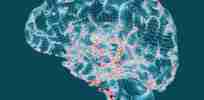
Not so-sterile brains? Researchers find harmless bacteria living there
In the latest example of bacteria being "literally everywhere," scientists appear to have found evidence of microbes living harmlessly in ...

‘People are primed for ET’: Why the discovery of alien life won’t frighten us
On [October 30] 80 years ago, actor Orson Welles announced to audiences in a chilling radio performance that Martians were ...

Longer lives for humans? Here’s what it will take
How healthy will the world be in 2040? If things continue as they are now, the answer is better off ...

Medieval graves yield genetic clues about kinship of Germanic warrior family
A dozen lavish medieval graves holding the remains of 13 people have finally spilled their genetic secrets, now that researchers ...

Here’s why so many of us are spooked by artificial intelligence?
[N]ot everyone is ready to welcome AI with open arms. In recent years, as computer scientists have pushed the boundaries ...

Why dreams are so hard to remember and what you can do about it
In waking life, [quickly] forgetting recent experiences would surely land you in a doctor's office. With dreams, however, forgetting is ...
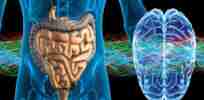
Do you have second ‘brain’ in your colon?
You're reading these words because you have a brain in your head. But did you know you also have a ...

King David’s United Monarchy: Is this 3,000-year-old Israeli house evidence of ‘lost’ biblical kingdom?
Archaeologists have discovered a sprawling, possibly 3,000-year-old house that suggests a biblical kingdom called the United Monarchy, ruled by King ...

About phosphorous and why extraterrestrial life may be a long shot
Phosphorus is an essential element for life — but that there was enough of it for life to start on ...

Searching for Hóp, the lost Canadian Viking settlement from lore
A lost Viking settlement known as "Hóp," which has been mentioned in sagas passed down over hundreds of years, is ...
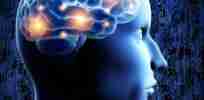
‘Spreading depression’: The silencing of electrical activity in dying brains
Harvard biologist Aristides Leão described finding a sudden silencing of electrical activity in the exposed brains of his unconscious experimental animals after ...
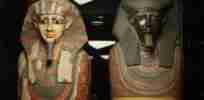
111-year old mystery solved: Egyptian mummies from 2000 BCE are half-brothers, DNA analysis shows
Two Egyptian mummies that rested next to each other for nearly 4,000 years are not full brothers, but rather half ...

